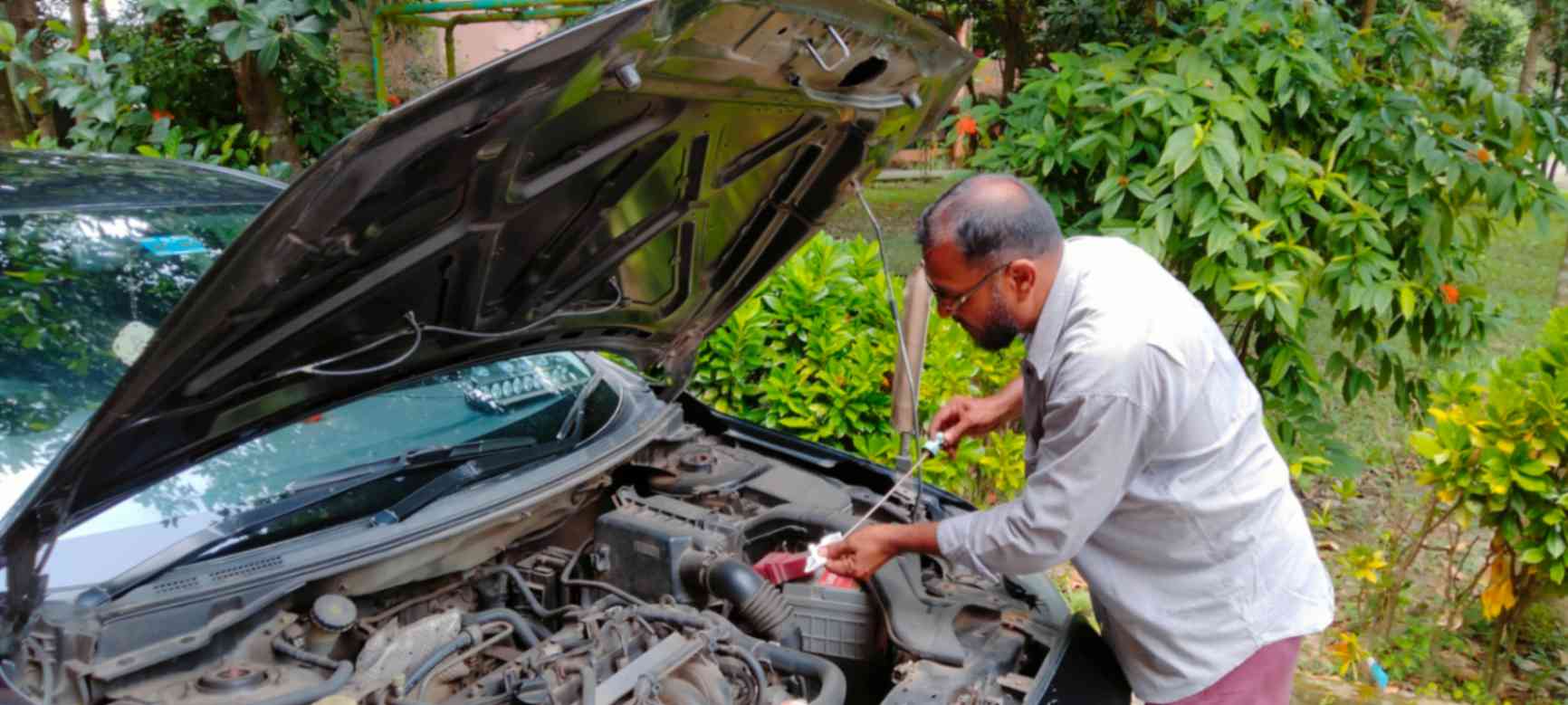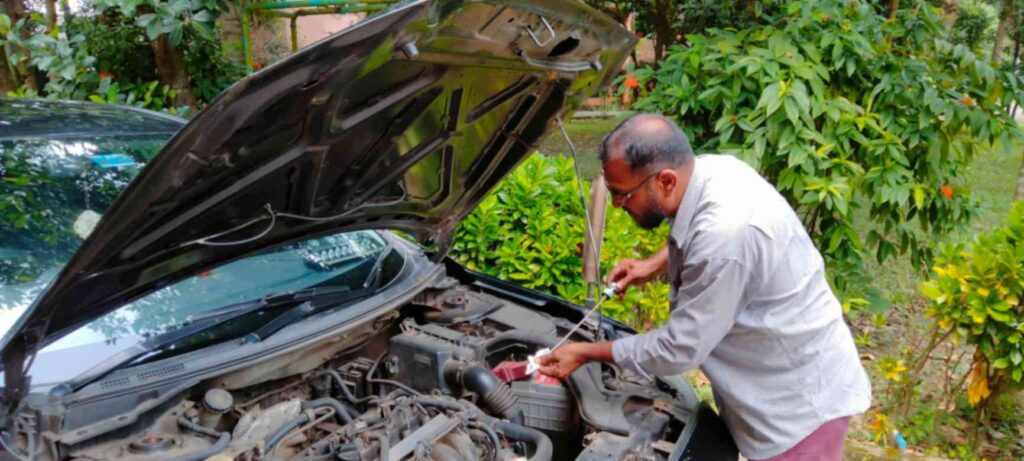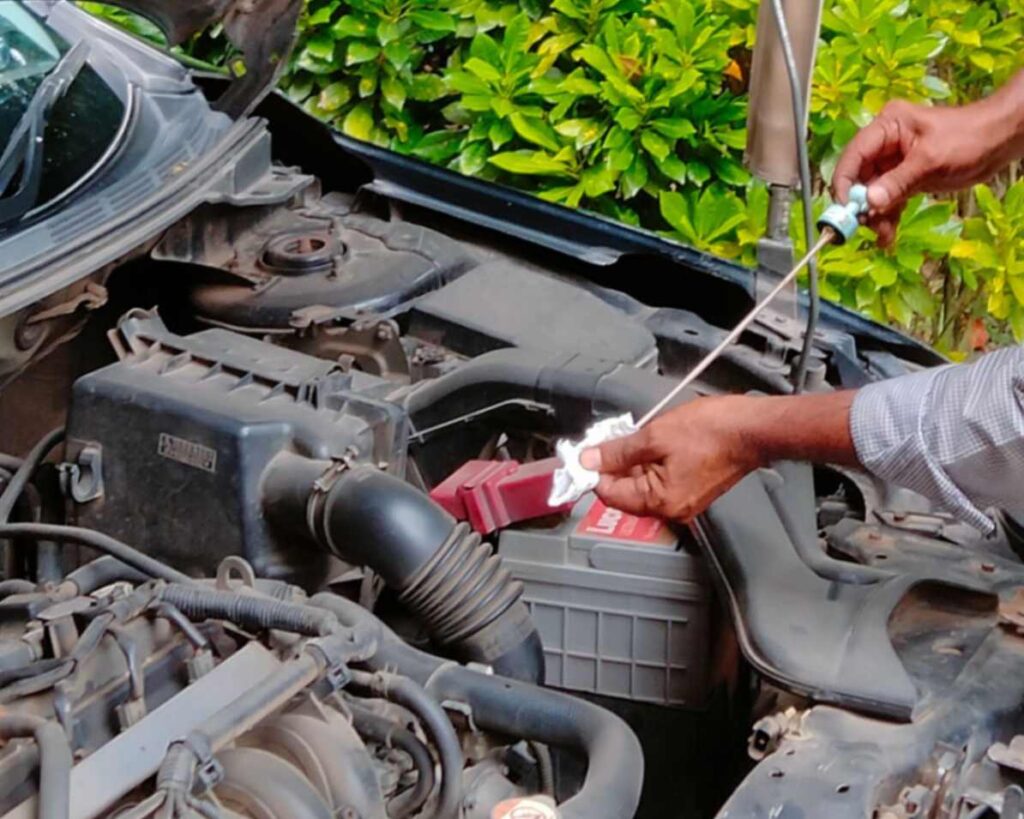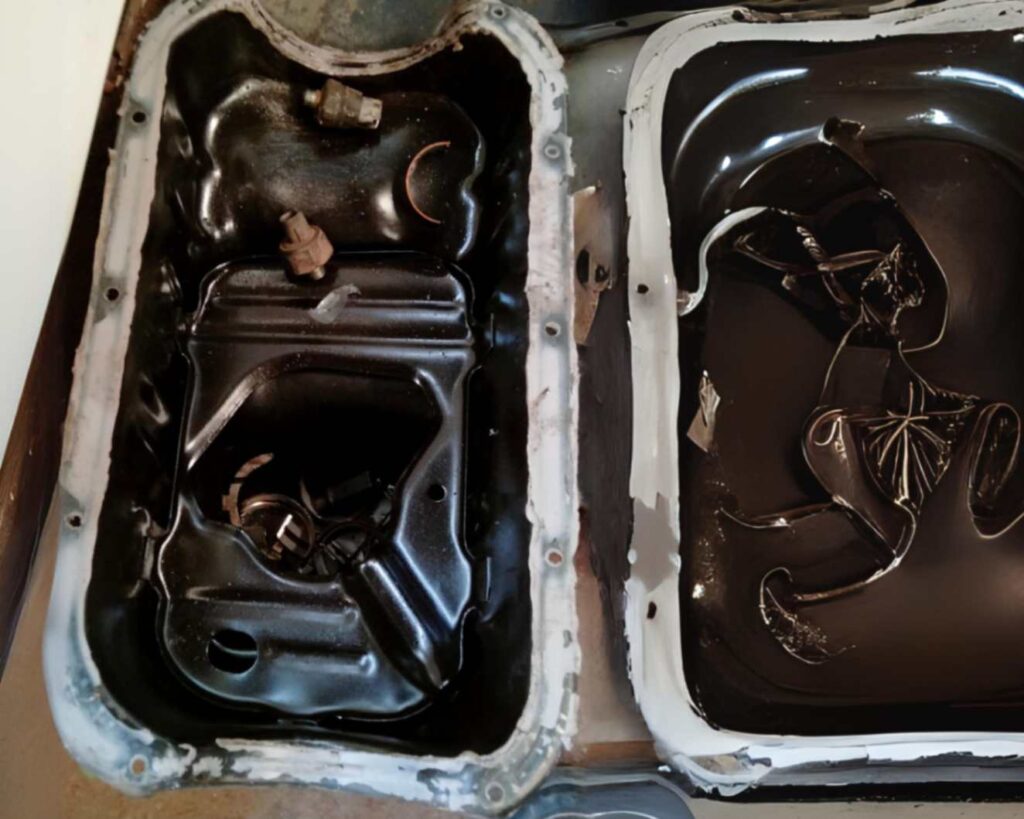Phone:
(701)814-6992
Physical address:
6296 Donnelly Plaza
Ratkeville, Bahamas.


Low engine oil can cause more than just a warning light. it may also lead to car shaking, especially during idle or acceleration. This issue, commonly found in car mechanics, drivers, and enthusiasts, can signal potential harm to your engine, making it essential to understand the root cause and solutions.
Moreover, ignoring low engine oil levels may seem minor, but the symptoms can worsen, causing serious engine wear and costly repairs. Car owners often wonder why their vehicles shake, not realizing that oil issues might be the culprit.
In this guide, we’ll explore how low engine oil leads to shaking, clarify what to watch for, and offer actionable steps to prevent and resolve the problem. Dive in for an in-depth look at this issue, crafted to ensure no lingering doubts remain.
Powerful in action, engine oil is essential for protecting your engine. It lubricates moving parts, reducing friction that can cause wear. Clean oil prevents sludge buildup, keeping narrow passages clear for smooth performance.
Powerful protection starts with clean oil. It prevents wear by reducing friction, allowing components to work without grinding.
Maintaining regular oil changes with quality oil supports your engine’s efficiency and extends vehicle life, keeping performance reliable and smooth. Regular care with high-quality oil is a small step toward a powerful impact on vehicle health and longevity.
Low oil levels can lead to unusual vibrations in your car, especially during idling. Low oil disrupts smooth engine function, causing it to shake and strain. Engine oil is vital for proper lubrication, cooling, and smooth operation.
Without enough oil, your engine may overheat, creating friction among components, which leads to shaking.
Here are key signs to recognize when your car might need an oil change:
When checking oil, its color should be translucent or yellowish. Over time, oil darkens, which is normal, but dirty or grimy oil with a thick, gritty texture won’t lubricate the engine properly. If your oil appears thick, grainy or resembles yogurt, it’s time for a change.

A low oil level can damage the engine, leading to costly repairs. Use the dipstick to check the oil level regularly, ensuring it sits between the minimum and maximum lines. Low oil levels often signal leaks that require immediate mechanic attention.
Many cars feature an oil change warning light. If this light or the check engine light comes on, it could mean your oil needs changing. Don’t ignore these alerts; it’s best to have your vehicle checked promptly.
Smoke from your car’s exhaust can indicate dirty or thin oil. Thin oil doesn’t lubricate well and may cause overheating and burning oil, visible as smoke.
Unusual vibrations when idling often stem from inadequate oil levels. Oil stabilizes engine movement, and when it’s insufficient, the engine vibrates.
A burning smell can indicate low or dirty oil. This scent signals engine overheating, as inadequate oil fails to maintain engine temperature.
Oil plays a crucial role in engine stability by reducing friction and protecting components. Engine oil acts as a shield, reducing wear and tear, stabilizing temperatures, and enhancing efficiency.
Moreover, it lubricates moving parts, preventing them from grinding against each other, which reduces friction and heat build-up. Here’s how oil maintains engine stability:
Oil creates a lubricating layer between moving parts, ensuring smooth operation. Reduced friction prevents unnecessary wear, keeping the engine stable and durable.
During combustion, acids form and can corrode parts. Oil neutralizes these acids, preventing build-up and protecting engine components.
Oil also acts as a cooling agent, transferring heat away from the engine. This prevents overheating and keeps the engine running smoothly, especially during extended drives.
Key Takeaways:
Spotting warning signs of low oil is crucial for engine health. When engine oil is low, it can result in overheating and increased friction within the engine. Here are a few signs to watch for:
Shaking can hint at a lubrication issue. When idling, shaking often points to low oil causing parts to rub together improperly. Here’s what to look for:
Regular oil checks and prompt action on these signs can save you from more expensive repairs and keep your vehicle running smoothly.
Ignoring low engine oil levels can severely damage internal components due to insufficient lubrication. When engine oil is low, metal parts grind against each other, leading to excessive friction and heat buildup. This accelerates wear and can cause serious problems like oil leaks and compression loss.
With low oil levels, engine components lose the protective oil layer, increasing wear and tear. Friction builds up as parts grind together, leading to overheating and faster degradation, which could lead to long-term damage and costly repairs.
Regular maintenance is essential for preventing engine wear and maintaining efficiency.
If your car is shaking and you suspect low oil, check the level using the dipstick. Follow these steps:
Regular oil checks can prevent issues caused by low lubrication and overheating.
Adding the right oil keeps your engine running smoothly. If levels are low:
Avoiding overfilling can prevent strain on engine seals and reduce leak risks.
After topping off, check for leaks that could cause recurring low oil:
Identifying leaks early helps maintain optimal oil levels and prevents further damage.
Therefore, these proactive steps can prevent severe engine damage and enhance vehicle performance, ensuring smooth rides ahead. Regularly monitoring oil levels and addressing leaks are critical to keeping your engine in prime condition.
Checking your engine oil is essential to maintaining your vehicle’s health, and it’s easier than you might think! All you need is a clean rag or paper towel, and your owner’s manual if you’re unfamiliar with the location of parts under the hood.
Performing an oil check takes only minutes and ensures your engine is well-lubricated. Follow these simple steps:
Topping off oil can be tempting, but it’s not always the best solution. You should only top up your oil when it’s critically low and you need to drive immediately to an auto shop. Regular oil changes are essential for maintaining engine health and performance. Avoid relying on top-ups alone to ensure proper engine care.
Choosing the right oil grade enhances your engine’s performance. Refer to your owner’s manual for the recommended oil type and ensure it matches your engine’s needs. Using the wrong oil can lead to inefficiencies and even shaking, harming your engine over time.

Staying on top of oil checks is essential to keep your car’s engine in top shape. Our mechanics recommend checking the oil level monthly or at every other fill-up. It’s a common misconception that new cars don’t require regular oil monitoring, but even newer models may need a top-off between changes. Regular checks help you spot issues early, preserving your car’s performance and longevity.
Frequent oil changes protect your engine, but intervals depend on your vehicle and its use. While the old rule was every 3,000 miles, modern cars can now go 5,000-7,500 miles on regular oil and up to 15,000 miles with full-synthetic oil. Tailoring the oil change schedule to your car type ensures its best performance and saves on maintenance costs.
A faulty spark plug can seriously disrupt engine function and lead to noticeable shaking. When spark plugs don’t ignite the fuel-air mixture correctly, the engine may misfire, leading to uneven firing of the cylinders and causing vibrations. Misfiring can also reduce fuel efficiency and lead to potential engine damage if left unchecked. Regularly inspecting and changing spark plugs ensures the engine runs smoothly.
Worn or damaged engine mounts can lead to excessive shaking in the engine compartment. Engine mounts absorb vibrations and secure the engine in place; when they wear out, they can’t absorb shocks effectively, leading to significant engine movement. This movement can misalign components, increase wear on surrounding parts, and cause uncomfortable vibrations inside the vehicle.
A clogged air filter can also lead to engine shaking by disrupting the air-fuel mixture. When airflow is restricted, the engine may struggle to burn fuel efficiently, leading to incomplete combustion and misfiring. Additionally, clogged filters can deposit oil on spark plugs, increasing engine strain and further contributing to rough engine performance.
Keeping up with your oil change schedule is key to your car’s health. Regular oil checks and changes not only improve your vehicle’s performance but also extend its lifespan. Here’s a helpful guideline for how often to check and change your oil:
Your engine needs some adjustments with each season to stay efficient. Switching to thicker oil in winter helps engines handle the cold more effectively, while thinner oils work best in summer.
Many drivers believe synthetic oil isn’t suited for older, high-mileage cars due to its perceived “slipperiness.” However, this is a myth. Synthetic oil’s enhanced formulation provides excellent protection, even for older engines. Here’s the truth:
Switching to thicker oil in winter helps some engines perform better in extreme cold. Here’s what you need to know:
Keeping a close eye on your oil is powerful for maintaining engine health. Regular oil checks are straightforward and prevent more significant problems from arising.
Checking the oil monthly, regardless of symptoms, ensures the engine stays well-lubricated and smooth. Use the dipstick to observe both the level and color of the oil; if the color appears unusually dark, it might be time for a change.
Consistently keeping the oil level above the halfway mark helps your engine run smoothly and avoid shaking.
Quality engine oil and filters are essential to extend your engine’s life. Premium oil provides superior lubrication, which helps reduce engine friction and wear. High-quality filters are equally important, as they remove contaminants, helping the engine run cleaner and preventing issues like shaking. Although these options may cost more upfront, they are a worthwhile investment that can help save on repairs over time.
Is your car still shaking even after topping up the oil? This is a clear sign it’s time for a professional inspection. Persistent shaking often points to deeper mechanical issues, such as worn bearings or faulty pistons, which need timely repair to avoid further damage. Here’s why a mechanic’s inspection could make all the difference:
Regular visits to a mechanic keep your car running smoothly by addressing oil-related issues quickly. Mechanics have the skills and equipment to detect worn seals, failing gaskets, and other factors affecting oil retention. Here’s why prompt oil-related repairs are vital:
Fixing oil leaks in your car can vary greatly, typically between $600 to $1,000. Factors impacting cost include the leak’s location, vehicle make, and repair complexity. Simple leaks, like a loose oil filter, may cost $150-$250, while a faulty oil pan gasket could reach $500. More complex repairs, like crankshaft seals, can exceed $800.
DIY repairs save costs but demand skill and tools, while professional work offers assurance but costs more. DIY oil-related fixes, like tightening a filter, are affordable but may risk errors. Pros, however, offer reliability for intricate repairs, justifying the expense for complex leaks.
This approach ensures cost control and thorough care for oil-related repairs in your vehicle, balancing budget and quality.
Yes, low oil leads to insufficient lubrication, causing engine parts to rub together, which creates vibrations and shaking.
Signs include rough idling, a lit oil pressure warning, unusual engine noises, and a burning oil smell.
Low oil increases friction, making the engine struggle to run smoothly, which can be more noticeable when idling.
Check monthly or at each fuel fill-up to ensure levels are between minimum and maximum on the dipstick.
No, driving with low oil can lead to severe engine damage and should be addressed by adding oil or visiting a mechanic.
Yes, adding oil can reduce vibrations if low oil is the cause. However, if shaking persists, further inspection is needed.
Low oil may lead to overheating, decreased fuel efficiency, engine noises, and, eventually, engine failure.
Yes, lack of lubrication from low oil can cause engine components to wear and overheat, potentially leading to irreversible damage.
Oil reduces metal-to-metal contact in the engine, preventing friction and vibrations, which keeps the car running smoothly.
Regularly check oil levels, change oil as per vehicle guidelines, and add oil when levels are low to avoid issues.
To conclude your article on “Low Engine Oil Car Shaking,” you might emphasize the importance of proactive maintenance and the direct impact of oil levels on engine performance. Here’s a concise, reader-friendly closing paragraph:
Low engine oil can quickly lead to engine vibrations, costly wear, and even potential engine failure if left unchecked. Checking and maintaining optimal oil levels ensures smooth driving and prevents expensive repairs. Don’t let low oil jeopardize your car’s health and keep an eye on your oil levels regularly to protect both your engine and your peace of mind.